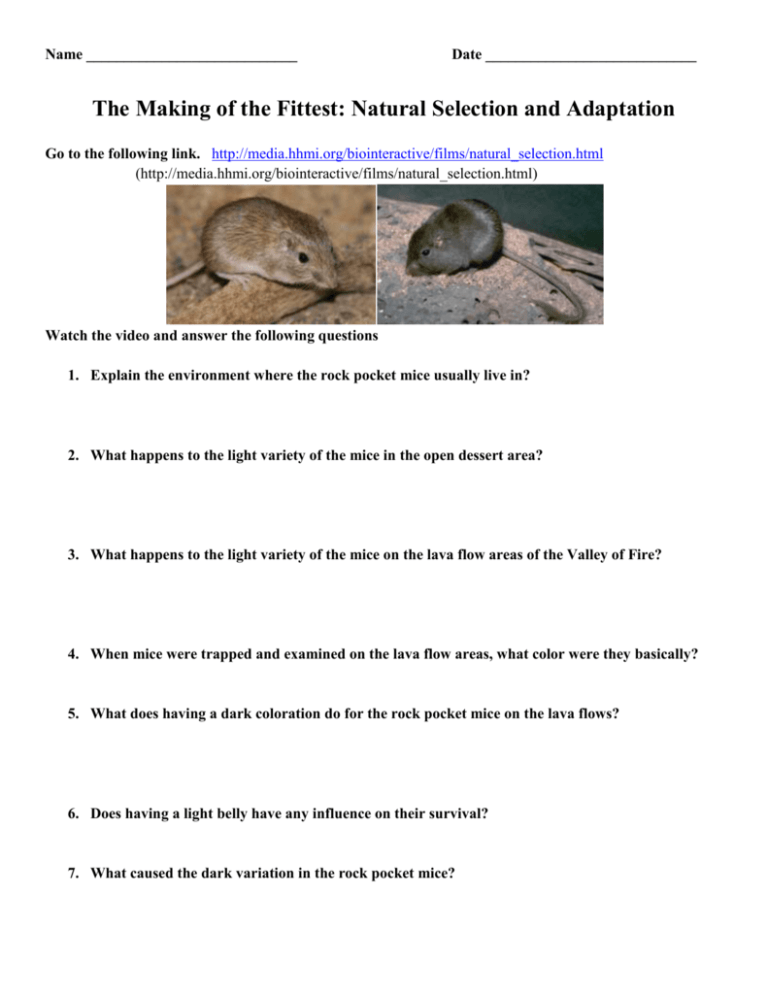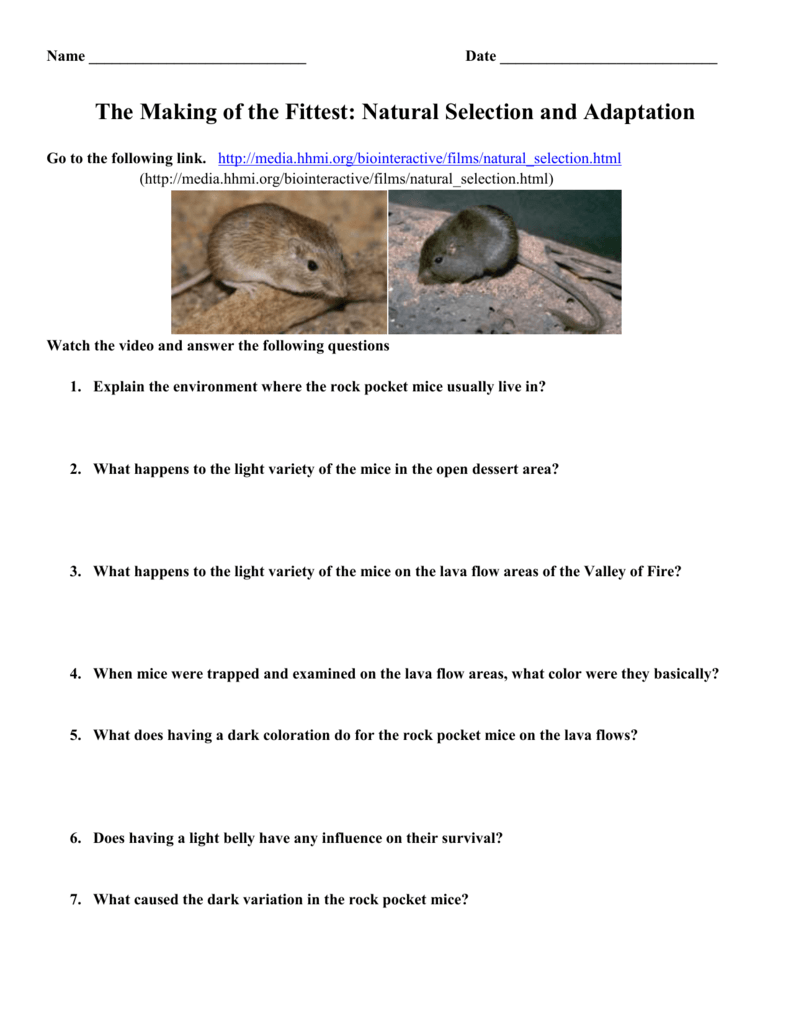
The teacher can use probing questions about the data students collected and analyzed from the illustrations and the information from the short film, to make sure that students construct their argument based on evidence from their data table and graph, and the information from the short film. Part of the activity asks students to write a scientific summary that describes changes in the rock pocket mouse populations at the location that changed from light to dark substrate due to a dark lava flow (location B). Teachers can use probing questions, such as “What story about the change in coat color at location A and B does your graph tell you? How does that connect to what you learned from the short film? What about the animation helps you explain why the proportion of light and dark colored mice changed over time in location B?” Different ways to help students monitor their own learning include encouraging students to explain their thinking to each other when working in small groups, defending their answers to the large group, which naturally leads into peer review of their work. The teacher should make sure that students construct their explanations based on their evidence collected by analyzing the four illustrations showing light and dark colored rock pocket mice at two locations, as well as the information from the short film and the animations. Students are applying the theoretical framework of evolution by natural selection to explain the patterns observed in the rock pocket mouse populations through answering four open-ended questions. This resource is explicitly designed to build towards this science and engineering practice.Ĭomments about Including the Science and Engineering Practice Throughout the activity, students should work with a partner or in small groups and be encouraged to share their thinking as they make decisions about re-ordering their illustrations, graphing the data, and answering the questions. To get a sense of their initial thinking, students should not skip the step of an initial ordering the rock pocket mice illustrations before they watch the short film. To engage student interest in the lesson, teachers should raise the question of how there came to be two different populations of pocket mice (light/dark). Before starting the activity, it is helpful if the teacher familiarizes students with the rock pocket mouse and its habitat.

Based on this evidence, students arrange the four illustrations in a sequence from oldest to most recent, and make an argument for how natural selection leads to a change in fur color in the populations of rock pocket mice over time.

As students return to the four illustrations after watching the video, they analyze the illustrations by counting and graphing the color distribution of rock pocket mice at the two locations (light/dark). Watching the short film, students learn about the changes of rock pocket mouse populations, and that the environment contributes towards determining whether or not randomly arising mutations in fur color are advantageous, neutral, or deleterious. This resource is explicitly designed to build towards this performance expectation.Ĭomments about Including the Performance ExpectationĪt the beginning of the lesson, students place four illustrations showing different numbers of light and dark colored rock pocket mice at two locations (light/dark substrate) in sequence from oldest to most recent.
#Biointeractive rock pocket mouse answers series#
The series also has two animations which will help to reinforce the concept. The film is also available as an interactive video with embedded questions, which test students’ understanding as they watch the film. This ten minute film shows adaptive changes in rock pocket mouse populations, demonstrating the process of natural selection and can be accessed at.

This is one of several classroom activities, focusing on related topics and varying in complexity, built around the short film. Based on this evidence, and what they learn about variation and natural selection in the accompanying short film, students use this evidence to explain the change in the rock pocket mouse populations on the lava flow (dark substrate) over time.

This activity provides an introduction to natural selection and the role of genetic variation by asking students to analyze illustrations of rock pocket mouse populations (dark/light fur) on different color substrates in the Sonoran Desert (light/dark) over time.


 0 kommentar(er)
0 kommentar(er)
